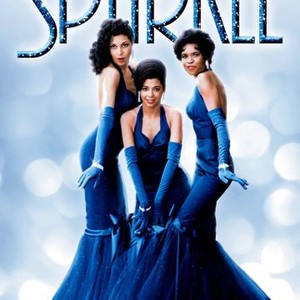

The brass, piano, and strings are all there, but further back in the mix. It’s similar, but it doesn’t glisten the way Aretha’s version does, relying more heavily on acoustic guitar and shaker in the forefront. It’s fascinating to listen to how he rearranges elements of the song, while maintaining others. And it’s Aretha, not her sister Carolyn who Curtis approached first to record the LP, nor Irene Cara and the other actresses in ‘Sparkle’ the film, who could have pulled off such a feat.Īs I researched, I was surprised to learn that Curtis also gave his own reading of “Sparkle” the following year on 1977’s Never Say You Can’t Survive. Sparkle is Aretha’s only post-1974 LP on Atlantic Records to be available on CD, digital, and streaming. The two albums released before, and three released after have never been reissued. Sparkle arrived in the midst of Aretha’s dry spell, despite being in some of her best voice in her career, the material aside from Sparkle didn’t match that. “You can believe,” she continues, “this love in me, as I believe in you.” Her surges of power are staggering, and her control is

“Understand, there will be no other man but you baby” she reassures. A troupe of background singers provide Aretha the reinforcement she needs to convey her message. Aretha begins her performance subdued and quickly crescendos to demonstrate her vocal prowess (superiority, dominance, power). But of course, what makes “Sparkle” truly glisten is Aretha and that vocal performance. The piano adds a nostalgic layer that harkens back to Aretha’s early Atlantic recordings. The brass and bass accentuate the moments of vocal staccato, while the horns and the strings beautifully compliment each other. What gives “Sparkle” it’s shine is funk, soul, brass, strings, and a glittering piano part (the piano could be Aretha, but all of the players on Sparkle remain unknown). The background vocals pale in comparison to Aretha’s, and the instrumentation isn’t quite as soulful, but the core the song and chord progressions echo the sentiments and shimmering vibe of “Sparkle.” The string arrangements on The Staple Singers’ 1975 “Let’s Do It Again”, written and produced by Curtis are also reminiscent of “Sparkle.” “PS I Love You” from 1976’s Give, Get, Take And Have has some similar elements to Sparkle’s title cut. Written by Curtis Mayfield, who composed and produced the entire LP, “Sparkle” aligns with Curtis’ other musical explorations around that time. The title track and opening cut to Aretha’s relief from late 70’s slump, “Sparkle” sets the tone for the short yet sweet body of work that followed. And truly, she’d feel even better after Sparkle hit record store shelves in 1976. (For contrast, listen to her rafters-high renderings of ”Joy” and ”I Believe in You and Me” on the smash 1996 soundtrack for The Preacher’s Wife.“I sparkle, loving the way that I do, it is true, I feel so good,” Aretha Franklin declares in front of glittering piano keys, sweet strings, over what is now a classic production from Curtis Mayfield.

You get the feeling her voice, raspy from so much hard living, just couldn’t take it.
ORIGINAL SPARKLE MOVIE SOUNDTRACK 1976 FULL
By the time the chorus kicks in, with a full choir, you’d expect her to break into a sermon-stopping vocal run. Her version of the standard ”His Eye Is on the Sparrow” begins with just piano and a little bit of church organ, as Houston testifies, in a gorgeously rippling solo, that Jesus is watching over her. So it’s powerful to hear Houston belting out a gospel song for the last time on record on Sparkle: Original Motion Picture Soundtrack, Salim Akil’s remake of the 1976 musical about three sisters who form a girl group. Sadly, that’s where she stopped singing, too - when she died in February, her funeral was staged at New Hope, with the congregation harmonizing along to her favorite hymns. Whitney Houston first started singing as a young girl in the gospel choir at the New Hope Baptist Church in New Jersey.


 0 kommentar(er)
0 kommentar(er)
